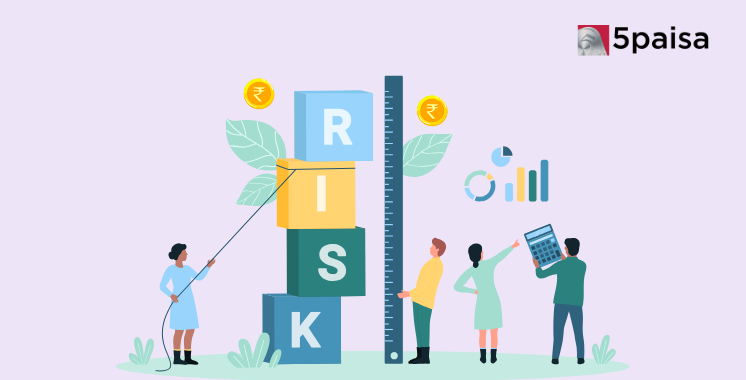Intraday in Stocks vs 24x7 Crypto Trading: Which Actually Works for Retail Investors?
Tips to Reduce Trading Loss

Ace investor Warren Buffett once famously said: “Rule No. 1 is never lose money. Rule No. 2 is never forget Rule No. 1.”
Buffett was talking about investments in financial markets. However, there is another aspect to this - if someone is making profit in a trade, someone else has to be making a loss. This holds true especially for the derivatives market that is a zero-sum game.
There will be days when you might feel like the Warren Buffett of the stock market, and there will be days when something as innocuous as a fat finger can burn a hole in your pocket.
Here, we will explore how to reduce the chances of incurring a trading loss or at least minimise them.
What is Trading Loss?
When a person sells a financial asset at a price lower than the purchase price, plus any carrying cost, it is referred to as a trading loss. This kind of loss can be incurred in stocks, bonds, commodities, forex, or any other financial instruments.
The reasons for a trading loss can vary from market volatility, poor investment decisions, changes or even Black Swan events that can change the dynamics of the markets. Even a smart investment decision can go wrong in case of extreme market volatility due to geopolitical events. Every smart investor applies strategies that minimises such losses.
Tips to Reduce Trading Loss
Effective risk management strategies are essential to minimize potential trading losses. Here are some tips to reduce trading losses:
1) Hedging: Most financial markets offer various kinds of hedging tools to ensure that your losses, if any, are minimised. Traders should ensure that they have a proper hedging strategy in place so that they can protect themselves from market volatility. Of course, hedging has cost of its own. But this cost may not be as high as the loss a trader might have to take when bets go wrong.
2) Stop Loss: Most financial trading platforms will offer a stop loss risk management tool to limit potential losses. Basically, it is an order to the broker to sell a security when it reaches a specific price.
Traders, as soon as they buy a security, should determine the percentage of loss they are willing to take on it. Thereafter, they must inform their broker about the value of the stop loss they want to set on the security. For example, if you have bought a security for ₹100 and you don’t want to take a loss of more than 10% on it, then ₹90 should be your stop loss. Meaning, the broker should sell your security if prices fall to ₹90.
Apart from the maximum loss that a trader is willing to take, a stop loss strategy is also based on the price beyond which price of the security can rise or fall rapidly. Technically referred to as support or resistance, these levels too can guide a stop loss.
The stop loss level should align with your overall trading strategy and risk tolerance.
A stop loss strategy is a smart way to manage investments, mainly in volatile or uncertain market conditions.
3) Stop Loss adjustments: Setting a stop loss is not a one-time thing. One has to keep updating it based on market movements and trading strategy. Let’s say you were to buy a stock at ₹10 and set a stop loss at ₹9. If the stock rises to ₹15 and you see more upside, but want to exit with a profit in any case of fall, then you can change the stop loss to say ₹12. Here you will make a minimum profit of ₹2 on the security.
4) Margin pressure: There are various tools that offer trading on margin money. One should be very careful of over-betting as the money initially invested may seem small. However, the losses that one might incur may be massive and the securities kept as margin may come under pressure. One should also be very careful when doing margin trading of where to stop and how much to bet.
5) Don’t put all eggs in one basket: Traders must ensure that they have diversified their investment pool into multiple assets so that a loss in one of the securities does not lead to a massive hole in the wallet. Diversification is one of the most important principles of safe trading.
6) Follow the news: Make sure that you are abreast of any news that may have wider ramification on the market or on any particular security that you are exposed to, either through spot or futures market.
7) Technical charts: Various tools are available to assess possible support and resistance for a stock based on past performance of a security and other parameters. A trader should keep an eye on such charts to assess potential losses and take action in advance to keep it at the minimum.
8) Beware of herd mentality: Traders should be aware of risks associated with following the crowd or making investment decisions based on what others are doing. They should rather rely on individual analysis and judgment. Such herd mentality has often led to market bubbles, which ones burst, leads to significant losses. To minimize trading losses, it's crucial to conduct thorough research, maintain a disciplined approach, and make decisions based on sound financial and economic principles rather than getting swayed by market trends or popular opinion.
9) Don’t marry a stock: Many traders get emotional about a security on which they have had high hopes in the past. This makes them reluctant to let go of it even in case of mounting losses. One should be careful not to be over-possessive about any security or trading position.
10) Put risk management in place: A trader should set alarms for any sharp movement in market, especially those that can cause a plunge in value of the asset they are holding. A robust risk management helps avoid or at least minimise trading losses.
Blog Content Flow Recommendation
Acknowledge the Loss and Stay Calm
- Accepting the reality of your loss is the first step toward recovery.
- Emotional reactions like panic or frustration can worsen decisions.
- Understand that even seasoned traders face losses — it’s part of the game.
- Composure helps in processing the setback rationally.
Analyse What Went Wrong
- Evaluate your trading decisions: Were they rushed or poorly researched?
- Identify flaws in your strategy or unexpected market events.
- Learn to spot gaps in execution, timing, or external influences.
Revisit and Revise Your Trading Plan
- Losses often indicate your strategy needs tuning.
- Realign your plan with your financial goals, market understanding, and risk profile.
- Introduce strong risk management tactics like stop-loss orders, position sizing, and diversification to limit damage.
Learn from Mistakes
- Every mistake is a lesson in disguise.
- Reflect on whether the loss stemmed from emotional decisions or lack of preparation.
- Use insights from the loss to sharpen your trading discipline and avoid repetition.
Restart with Small Trades
- Begin with low-risk trades to rebuild self-confidence.
- Gradually increase position sizes after gaining momentum with small wins.
- Small victories act as psychological reinforcement.
Stay Updated with Market Trends
- Keep track of domestic and global market cues and economic indicators.
- Use credible sources to stay informed and improve decision-making.
Maintain a Positive Mindset
- Don’t dwell on losses—view them as temporary hurdles.
- Focus on long-term growth and learning.
- A strong mindset boosts resilience and helps you bounce back effectively.
Conclusion
To prevent or reduce trading losses needs a mix of disciplined investment practices, independent analysis, continuous watch on fundamentals, technical and news, and control over emotions. Traders must avoid the pitfalls of herd mentality, should follow comprehensive research and a clear understanding of market dynamics. Employing tools mentioned above, like stop loss, can provide an additional safety net against unforeseen market fluctuations.
Frequently Asked Questions
How do you know when to cut your losses in trading?
Is it normal to incur losses in trading?
Are trading losses tax-deductible?
What is a stop-loss order and why should I use it?
Can I change my stop-loss once the trade is active?
Why is trading on margin risky?
What’s the danger of falling into herd mentality?
- Flat ₹20 Brokerage
- Next-gen Trading
- Advanced Charting
- Actionable Ideas
Trending on 5paisa
Indian Stock Market Related Articles
Disclaimer: Investment in securities market are subject to market risks, read all the related documents carefully before investing. For detailed disclaimer please Click here.

 5paisa Research Team
5paisa Research Team
 5paisa Research Team
5paisa Research Team
 Sachin Gupta
Sachin Gupta




